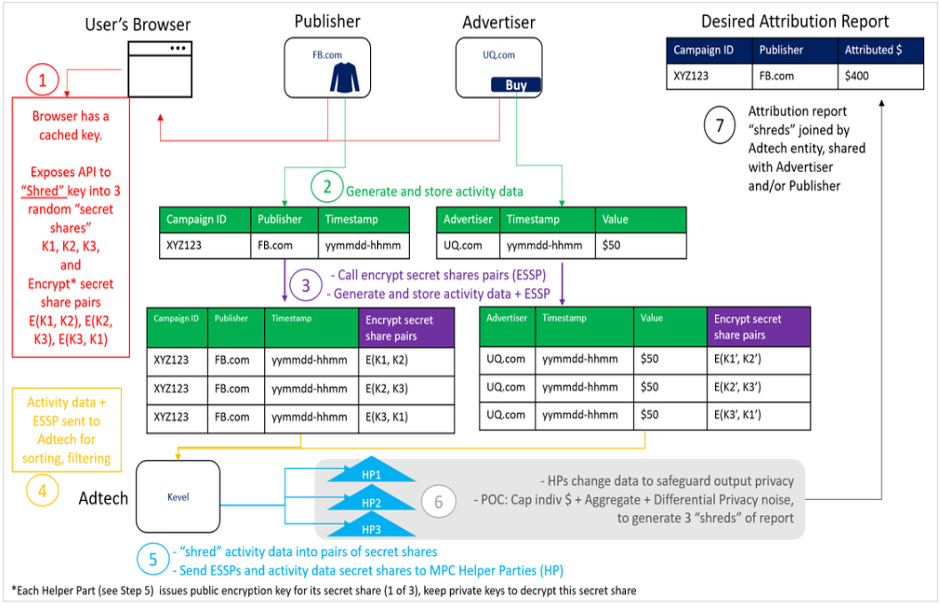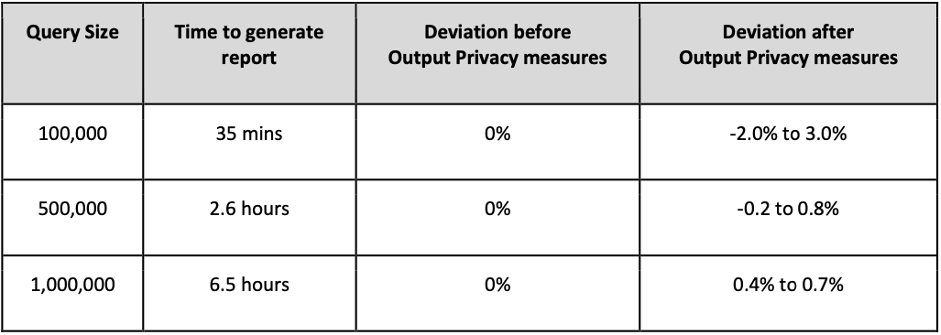Recently, Cybernetica had the honour to contribute to a series of tests in a case study handling an important topic for all Internet users – user data privacy and security. The case study was conducted by the Infocomm Media Development Authority (IMDA) based on technological solutions engineered by Meta and Mozilla.
The aim of the case study was to investigate various Privacy Enhancing Technologies (PETs), including Multi-Party Computation (MPC), in order to find new technologies for user data security and privacy inside the digital advertising ecosystem. During the tests, the findings suggested how well these solutions worked to simultaneously secure data while preserving the usefulness and efficacy of digital advertising.
Tracking technologies, like 3rd party cookies, are presently a mainstay in the digital advertising ecosystem. Publishers, advertisers and adtech firms rely on the collection and sharing of user/device identifiers to analyse how consumers can be shown advertisements best aligned to their online interests or activities. (IMDA, Meta, 2023)
However, the ecosystem is preparing for a paradigm in which the collection of user/device identifiers that are linkable across apps/websites is no longer feasible, and trust in the ecosystem is low. A prominent avenue where solutions to measure attribution of digital ads without tracking technologies is actively discussed is the World Wide Web Consortium (W3C)’s Private Advertising Technology Community Group, or “PAT-CG”. (IMDA, Meta, 2023)
Meta and Mozilla, as members of PAT-CG, have proposed a solution – “Interoperable Private Attribution” or IPA. It uses a combination of multiparty computing (MPC), aggregation, differential privacy (DP) and write-only identifiers to enable attribution measurement. The solution aims to measure advertising outcomes based on impressions shown on publisher website(s)/app(s) and conversions occurring on an advertiser website/app. (IMDA, Meta, 2023)
Cybernetica's role in this proof of concept (POC) was twofold. First, we were one of three Helper Parties in this deployment of IPA. The Helpers together powered the analysis over encrypted values in MPC by lending compute resources for the task. This meant processing and aggregating the synthetic data while retaining its privacy and integrity. Secondly, Cybernetica was able to contribute its know-how from practical experience of deploying MPC systems for various use cases over the past ten years.

(IMDA, Meta, 2023)
‘Last Touch Attribution’ was the use case chosen for the POC, which is one of the most basic digital marketing models used by advertisers to try to understand how much value was generated by showing their ads on specific apps or websites. (IMDA, Meta, 2023)
The POC addressed the following three objectives:
- Find the technical bounds of running queries with IPA on high volume of records
- Assess the usefulness of ad measurements computed through IPA
- Identify the necessary conditions of compliance and governance (IMDA, Meta, 2023)
The use case flow for the POC was as follows:
- An advertiser runs an advertisement campaign to publish its advertisement on a specific website (“publisher”).
- The publisher displays the advertisement to its users.
- Several users view the advertisement, of which some of would go to the advertiser’s website and make a purchase (i.e. conversion).
- An Adtech entity, supporting the advertiser, measures the attributed conversion value for the ad campaign (i.e. the total value of purchases made by users within 7 days of seeing an ad on the publisher's website/app. (IMDA, Meta, 2023)
IPA-based Attribution Report retained usefulness. The ability of IPA to deliver attribution reports useful to Adtech or advertiser firms was assessed by how much such reports deviated from a perfectly accurate answer, assuming entities were able to collect accurate device-level linkable data using existing techniques (like 3rd party cookies or mobile advertising IDs). The
assessment was based on the relative error in IPA-based attribution values, reflected in the Table 3 below. As expected, the relative error was zero up to the point of “capping” and adding DP “noise”, after which the relative error ranged from 0.2% to 3% for a DP epsilon value of 1. (IMDA, Meta, 2023)
MPC communication latency was acceptable. High Latency, an issue inherent to MPC based computations distributed across nodes (i.e. Helper Parties) instead of central server, was an issue the project anticipated. Table 3 below describes the number of records queried and the time taken to generate the measurement report. Kevel, the participating Adtech organization in this POC, opined that the time to generate such reports was not disruptively high. (IMDA, Meta, 2023)
The consortium identified some ideas to reduce latency, e.g.
- Locating the Helper Party servers such that they are geographically as close as possible while avoiding the possibility of collusion.
- Accommodating parallelisation in the IPA code (currently using a single core).
- Leveraging research work dedicated to reducing network communication in MPC. (IMDA, Meta, 2023)

Table 3 (IMDA, Meta, 2023)
It was revealed that PET-based solutions like IPA can be used to reliably measure
advertising outcomes in an ecosystem without tracking mechanisms such as 3rd party cookies. Production-level usage calls for further technical improvements and clear governance processes. These could range from encoding best practices for participating entities to safeguard against risks of re-identification, to reducing the time and cost of upkeep of the system.
